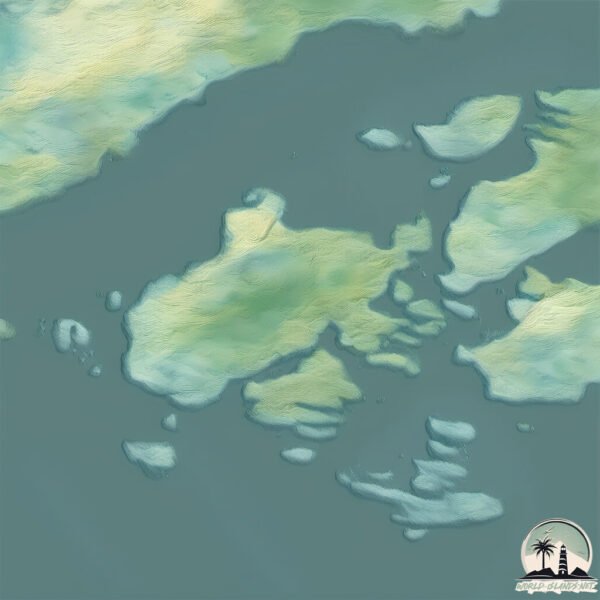Welcome to Nanortalik , a Polar island in the Davis Strait, part of the majestic Arctic Ocean. This guide offers a comprehensive overview of what makes Nanortalik unique – from its geography and climate to its population, infrastructure, and beyond. Dive into the details:
Geography and size of Nanortalik
Size: 20.3 km²Coastline: 37 kmOcean: Arctic OceanSea: Davis StraitContinent: North America
Nanortalik is a Medium Island spanning 20 km² with a coastline of 37 km.
Archipel: –
Tectonic Plate: Eurasia – One of the world’s largest tectonic plates, the Eurasian Plate covers a significant portion of Europe and Asia. It’s characterized by diverse geological features, including the Ural Mountains, the European Plain, and the Himalayas formed from its collision with the Indian Plate.
The geographic heart of the island is pinpointed at these coordinates:
Climate and weather of Nanortalik
Climate Zone: PolarClimate Details: TundraTemperature: Cold
Climate Characteristics: The tundra climate features long, extremely cold winters and short, cool summers. Vegetation is limited to mosses, lichens, and small shrubs due to the low temperatures and short growing seasons. Biodiversity is low, but some specialized species thrive.
Topography and nature of Nanortalik
Timezone: UTC-03:00Timezone places: America/Sao_PauloMax. Elevation: 450 m Mean Elevation: 174 mVegetation: Herbaceous CoverTree Coverage: 26%
The mean elevation is 174 m. The highest elevation on the island reaches approximately 450 meters above sea level. The island is characterized by Hills: Gently sloping landforms with rounded tops, having a maximum elevation between 200 and 500 meters. Hills contribute to a varied landscape on islands.
Dominating Vegetation: Herbaceous Cover
Vegetation: 4 vegetation zones – Diverse Island
Infrastructure and Travelling to Nanortalik
Does the island have a public airport? no .
Does the island have a major port? no .
The mean population of Nanortalik is 53 per km². Nanortalik is Gently Populated. The island belongs to Denmark .
The name of the island resonates across different cultures and languages. Here is how it is known around the world: Arabic: جرينلاند; German: Grönland; Spanish: Groenlandia; French: Groenland; Portuguese: Gronelândia; Russian: Гренландия; Chinese: 格陵兰
Continuing your journey, Sermersooq is the next notable island, situated merely km away.
Greenland Nanortalik -Walking tour & Things to See in one of the most remote cruise port.格陵兰纳诺塔利克之旅
Video taken in August 2023. 00:00 Drone view of Nanortalik 00:32 Nanortalik Tender Pier Area 02:28 Nanortalik Tourism Office ...
Greenland Nanortalik -Walking tour & Things to See in one of the most remote cruise port.格陵兰纳诺塔利克之旅
Video taken in August 2023. 00:00 Drone view of Nanortalik 00:32 ...
Video taken in August 2023. 00:00 Drone view of Nanortalik 00:32 Nanortalik Tender Pier Area 02:28 Nanortalik Tourism Office ...
Cruise Port Guide - Nanortalik Greenland - What to see! 2025 - @LivinLifeNow
Port Information, tours and general information to make the most of ...
Port Information, tours and general information to make the most of your day in the cruise destination of Nanortalik Greenland - I ...
Nanortalik (Greenland), Open Air Museum, Church, Nature, Orange Party - HAL Ultimate Viking Explorer
Our second and shorter day in Greenland finds us in the town of ...
Our second and shorter day in Greenland finds us in the town of Nanortalik! Join us as we tender ashore to check out the Open Air ...
Denmark is classified as Developed region: nonG7: Developed economies outside of the Group of Seven, characterized by high income and advanced economic structures. The level of income is High income: OECD.
News – Latest Updates and Headlines from Nanortalik
Stay informed with the most recent news and important headlines from Nanortalik. Here’s a roundup of the latest developments.
Loading...
Please note: The data used here has been primarily extracted from satellite readings. Deviations from exact values may occur, particularly regarding the height of elevations and population density. Land area and coastline measurements refer to average values at mean high tide.

